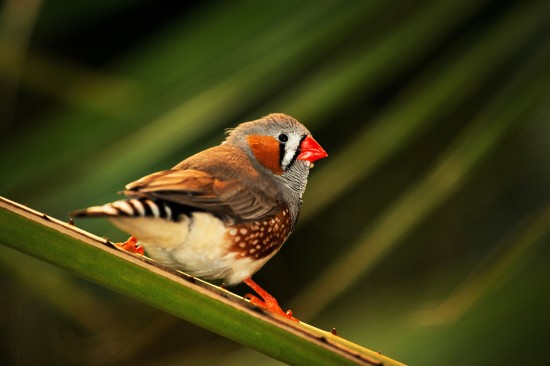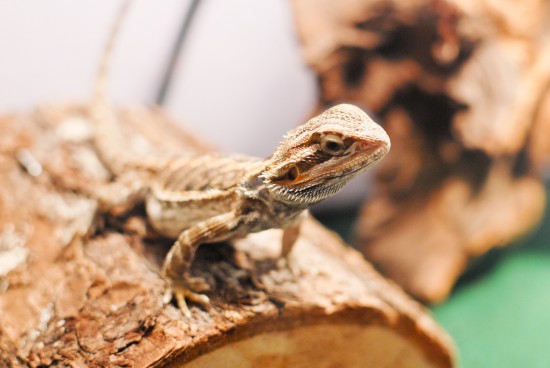If you have been researching dwarf hamsters for any length of time, then you have probably come across mention of the Chinese dwarf hamster. And you may have passed over considering this little fellow as a pet when you when you read the description "rat-like" or "mouse-like". If that's the case, you're doing yourself a terrible disservice because, of the four species often referred to collectively as "dwarf hamsters", this delightful pocket pet is the most sociable toward his human companions and, by far, the most interesting.
Not Really a Dwarf
Even though the Chinese hamster is often grouped with the dwarf hamsters because of its similar size, scientifically speaking, it's not really a dwarf. Siberian, Campbell's and Roborovski dwarf hamsters all belong to the genus, Phodopus, whereas the Chinese hamster belongs to the genus, Cricetulus. And the misunderstanding doesn't stop there.
This amusing little guy is actually known by several names; Striped hamster, Chinese striped hamster and, sometimes, Dwarf striped hamster. Two of these names add even more to the milieu of confusion.
First, the name, Dwarf striped hamster, is also used to refer to the Siberian or Winter White Russian dwarf hamster (Phodopus sungorus).
Secondly, there is debate as to whether the Chinese striped hamster is the same species as the Chinese hamster (Cricetulus griseus). There are some scientists who propose that it is a separate, but closely related species (Cricetulus barabensis), or a sub-species, the Latin name then being, Cricetulus griseus barabensis. Some even suggest that it is the other way around; the Chinese hamster is a sub-species of the Chinese striped hamster. (Whew!)
No matter. Let the taxonomists figure it out. Whatever you call him, he is one interesting little guy, and a rare find... literally.
Chinese hamsters are not easily bred in captivity and there are restrictions on ownership in most of the United States. California, by way of example, requires that you obtain a permit.
Too Cute to Be a Rat
The Chinese hamster is one of about six hamsters comprising the group known as "rat-like hamsters". This is because their heads are longer and pointier than other hamsters, resembling that of a rat. Their bodies are more slender and their fur shorter and sleeker. Plus, they have a longer tail which is about one inch in length and semi-prehensile; it can be used to aid in climbing.
Like true dwarf hamsters, the Chinese hamsters are tiny, growing to only 4 inches in length. Their natural color is agouti; individual hairs are "striped" with both light and dark colors. They have cream-colored bellies and a black stripe that runs the length of their spine.
There are two color variations: the dominant spot, which has a predominantly white coat with spots of grey-brown color spread along the dorsal stripe, and the black-eyed white, an all-white hamster that is discernible from an albino because its eyes are black. Both these variations are rare because breeding two like animals of either of these varieties rarely produces viable offspring. Additionally, black-eyed white males are reportedly sterile.
Chinese hamsters have a comparatively long life. A few have been known to live as long as four years, although the average life expectancy is two and a half to three years.
The Loner of the Dwarf Hamster Set
While true dwarf hamsters tend to be gregarious with others of the same species, that is not the case with the Chinese hamster. In fact, although experienced breeders have some success keeping these animals in pairs or groups, it is not advisable for the novice handler. The females are extremely aggressive and are known to attack, and sometimes kill, other hamsters that invade their territory.
Conversely, they are usually quite friendly toward their human keepers and very seldom bite. They can be a bit difficult to tame, however, because they are extremely timid as youngsters and a bit jumpy.
These diminutive creatures are swift, agile, and expert climbers. They have the endearing behavior of clinging to their human companion's finger with all four feet and, sometimes, their tail (much like an opossum would cling to a branch). They will not hesitate to jump from great heights, which may result in serious injury or worse.
When handling them, it's best to ensure that they will have a "safe landing" by minimizing the distance that they would fall should they suddenly leap out of your grasp. These characteristics make the Chinese hamster a very poor choice as a pet for anyone under the age of 12 or so. Teenagers and young adults would find them thoroughly engaging
Caring for Your Hamster
The requirements of caring for a Chinese hamster are very similar to that of any other hamster. They need a good quality commercially prepared hamster seed mix, augmented with occasional fresh greens, fruits and veggies (avoid onions and their kin). A special treat of meal worms, crickets or a small amount of cooked egg may also be given. Hay can be used to supply additional dietary fiber and has the added benefit of providing a nesting material for your pet. A constant supply of fresh water is an absolute necessity for promoting good health and a friendly disposition.
Because of their stream-lined bodies, the little guys can easily squeeze through the bars of just about any cage. So wire cages are definitely not a good option. A 10 - 20 gallon aquarium with a tight-fitting screen cover is generally your best choice. As with all hamsters, pine or cedar shavings should not be used as litter. Aspen shavings or pelleted newspaper work well. Be sure to provide material with which your hamster can build a nest. Acceptable materials include hay and clean shredded paper or tissue that is free of chemicals or dyes.
Be sure to include a nesting box of some sort and a variety of hamster toys. Hamsters are very active creatures and also need to gnaw in order to keep their teeth trimmed. An exercise wheel and various soft wooden chew toys are a must.
An Extraordinary Find
If you feel that a Chinese hamster is just the right fit for your household, your best bet for finding one is to locate a professional breeder in your area. He or she would also be able to inform you of any laws governing the keeping of these wonderful little critters in your geographic region. Although difficult to come by, Chinese hamsters are, without a doubt, a rare and entertaining pet.

 Guide To Starting Bird-keeping
Guide To Starting
Guide To Starting Bird-keeping
Guide To Starting
 Bearded Dragon Facts And Information
Bearded Dragon Fa
Bearded Dragon Facts And Information
Bearded Dragon Fa
 How To Train Your Dog To Wear A Muzzle
How To Train Your
How To Train Your Dog To Wear A Muzzle
How To Train Your
 Essential Tips for Taking Good Care of Our Pets
Essential Tips for Taking Good Care of Our Pets
Essential Tips for Taking Good Care of Our Pets
Essential Tips for Taking Good Care of Our Pets
 Gift your Pets a Warm, Stay in Cosy Chicken Coops
Gift your Pets a Warm, Stay in Cosy Chicken Coops
Gift your Pets a Warm, Stay in Cosy Chicken Coops
Gift your Pets a Warm, Stay in Cosy Chicken Coops